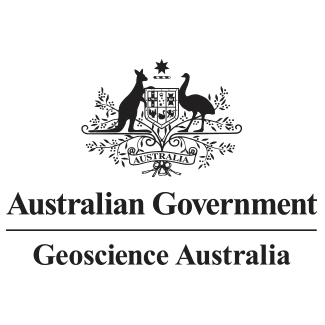Full description
Geoscience Australia carried out marine surveys in Jervis Bay (NSW) in 2007, 2008 and 2009 (GA303, GA305, GA309, GA312) to map seabed bathymetry and characterise benthic environments through co-located sampling of surface sediments (for textural and biogeochemical analysis) and infauna, observation of benthic habitats using underwater towed video and stills photography, and measurement of ocean tides and wave-generated currents. Data and samples were acquired using the Defence Science and Technology Organisation (DSTO) Research Vessel Kimbla. Bathymetric mapping, sampling and tide/wave measurement were concentrated in a 3x5 km survey grid (named Darling Road Grid, DRG) within the southern part of the Jervis Bay, incorporating the bay entrance. Additional sampling and stills photography plus bathymetric mapping along transits was undertaken at representative habitat types outside the DRG.The GA0309_0312_JervisBay2008 folder contains video footage; the GA0326_JervisBay2009 folder contains still images; and the files are the video characterisation datasets. Underwater towed-video footage and still images represent the raw data. Video characterisation datasets include substrata types and the presence/absence of benthic taxa.
Lineage
Maintenance and Update Frequency: asNeeded
Statement: Two video surveys were conducted during the 17-20th June 2008 (GA survey #0312) and 25-26th August 2008 (GA survey #0309) in the Darling Road survey area. In addition, a drop-camera survey was conducted during 23 - 26 November 2009 to collect still colour photographs of the seabed at 24 stations across Jervis Bay. To map the spatial distributions of benthic habitats and biota within the Darling Road grid, video transects were run alongshore (4x 6km-long transects) and offshore (6x 3km-long transects) using Geoscience Australias shallow-water Raytech towed-video system. The initial survey was undertaken during the 17-20th, June 2008 (early Australian winter) as part of the acceptance test of the new towed-video system (GA Survey No. GA312). During this time we successfully collected 6 offshore transects and 1 of the 4 alongshore transects. A follow-up survey two months later on 25-26th August 2008 completed the remaining 3 alongshore transects (GA Survey No. GA309). The towed-camera system housed a forward-facing video camera and associated lights, and was deployed from the stern of the MV Kimbla and towed at 0.5 to 1.5 knots. A rope capstan was used to maintain the video system at an altitude of 0.5 - 2 m above the seabed, while a coaxial cable transmitted video footage to the ships video monitor where it was characterised in real time by the observer and similtaneously recorded to mini DV tapes, which were later copied to digital format. Seabed characterisations were recorded in real-time every 30 seconds along each video-transect using the 3-tiered characterisation scheme of substratum composition, bedform-relief, and biota presence described in Anderson et al. (2008). A 15-second period (i.e. 5 seconds prior to and 10 seconds following the GPS fix) was evaluated to characterise the seabed. Seabed characterisations were entered in GNav Real-time GIS Tracker software ( Gerry Hatcher, 2002) using a 142 key Cherry programmable keyboard (Cherry, 2008). For each data entry location, the GPS captured ships navigation (UTC date, time, latitude, and longitude). Data entry took between 3-12 seconds, and required a two-person team (i.e. observer and data-enterer). Substrata composition (i.e. rock, boulders (greater than 25.5cm), cobbles (6.5-25.5 cm), sand, and mud) was categorised by primary (greater than 50% cover) and secondary (greater than 20% cover) percent-cover following the earlier protocol of Stein et al. (1992) and Yoklavich et al (2000).
Issued: 2011
text: westlimit=150.7014; southlimit=-35.1345; eastlimit=150.772; northlimit=-35.0875
Subjects
AU-NSW |
Bathymetry Grid |
CERF |
Earth Sciences |
Geology |
Marine Data |
Marine Geoscience |
Published_External |
geoscientificInformation |
habitat |
marine |
marine survey |
User Contributed Tags
Login to tag this record with meaningful keywords to make it easier to discover
Other Information
Download the file (mdb) (File download)
Identifiers
- Local : pid.geoscience.gov.au/dataset/ga/72043
- global : a529430e-2185-0f20-e044-00144fdd4fa6


